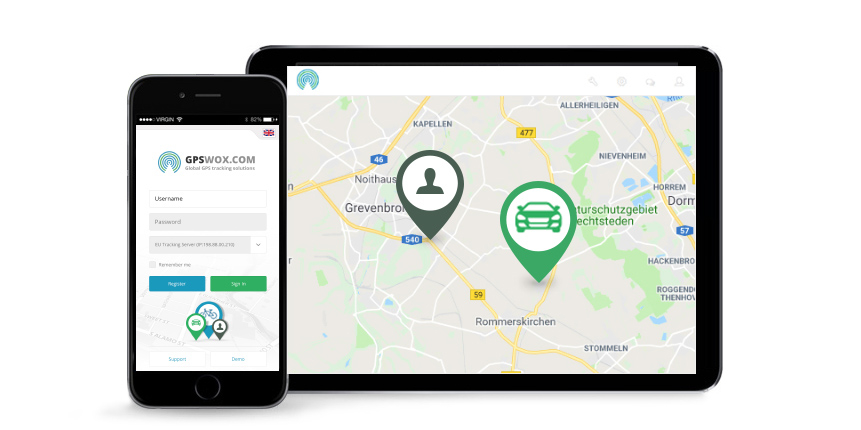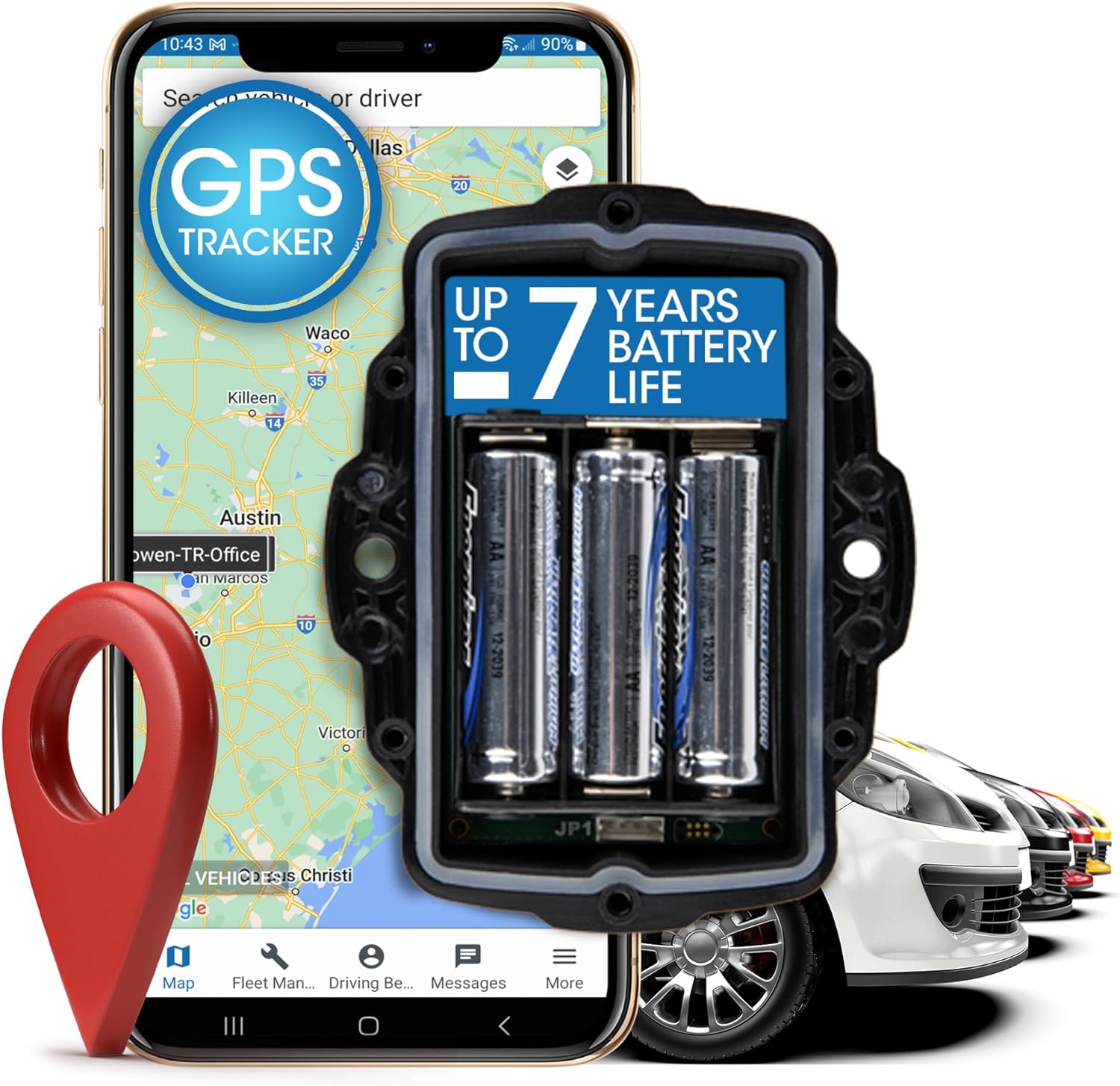Advanced GPS Tracking Systems: Maintaining Your Assets Safeguard
Wiki Article
Optimizing Efficiency With GPS Tracking: Strategies for Fleet Management and Possession Monitoring
In the world of fleet monitoring and asset tracking, the utilization of GPS monitoring systems has ended up being a keystone for boosting functional performance and performance. As we check out the various methods and strategies to take full advantage of efficiency with General practitioner tracking, a globe of possibilities opens up to redefine how companies handle their fleets and monitor their properties.Applying Real-Time Monitoring Equipments
To make best use of operational effectiveness, business can carry out real-time monitoring systems that offer immediate area data for their assets. By using GPS modern technology, organizations can get real-time understandings into the whereabouts of their lorries, devices, and other valuable resources. This degree of visibility enables firms to enhance procedures, improve productivity, and enhance general performance.Real-time tracking systems supply many advantages for companies throughout different markets. With the ability to keep track of possessions continuously, companies can maximize routing, routine upkeep extra efficiently, and lower the threat of burglary or loss. In addition, these systems make it possible for services to react without delay to any type of unexpected occasions or disturbances, making sure minimal downtime and optimum effectiveness.
Applying real-time radar requires cautious planning and factor to consider of particular business needs. Firms have to pick the best modern technology company, tailor the system to meet their needs, and provide adequate training to staff members. By purchasing real-time tracking solutions, companies can stay ahead of the competition, deliver remarkable customer care, and achieve lasting development in today's fast-paced market setting.
Maximizing Path Preparation and Organizing

One trick technique for enhancing route planning is to use historical data and real-time details to recognize one of the most effective paths for lorries. By examining past paths and taking into consideration variables such as web traffic patterns and delivery home windows, companies can produce timetables that minimize unnecessary quits and delays. In addition, applying dynamic transmitting capacities allows for adjustments to be made in real-time based upon transforming conditions, guaranteeing that chauffeurs constantly take one of the most efficient course to their location.
Enhancing Chauffeur Efficiency and Security
Enhancing chauffeur performance and security is critical in making sure the secure and smooth operation of a fleet. By making use of general practitioner tracking technology, fleet supervisors can check chauffeur habits in real-time and give immediate comments to advertise risk-free driving methods. This consists of surveillance rate restrictions, harsh braking, acceleration patterns, and adherence to website traffic laws.Furthermore, GPS tracking systems can aid in recognizing drivers that might need extra training or assistance to boost their efficiency (gps tracking). By assessing data on driving practices and patterns, fleet managers can execute targeted training programs to address particular areas of improvement. This positive technique not only boosts total vehicle driver efficiency Learn More Here but likewise adds to a more secure workplace for everyone included
Along with efficiency tracking, general practitioner monitoring systems can also boost driver safety by supplying emergency situation assistance functions. In case of an accident or break down, motorists can quickly send out distress signals, permitting fleet managers to react immediately and dispatch aid when required. On the whole, integrating GPS tracking technology into fleet monitoring techniques is crucial for enhancing chauffeur efficiency and making certain the safety and security of both motorists and assets.

Using Geofencing for Enhanced Security
Making best use of fleet protection surpasses checking driver performance and safety; one efficient method is via the critical use of geofencing innovation. Geofencing permits fleet supervisors to establish online borders or geozones around particular locations, allowing them to get real-time signals when cars get in or leave these marked areas. By establishing geofences around high-risk locations such as building sites, unapproved locations, or perhaps client locations, fleet managers can improve protection procedures and alleviate prospective dangers.Geofencing not only improves protection but also enables quick response times in case of unauthorized vehicle usage or theft. In the occasion of a violation, signals can be sent out to fleet managers, enabling them to take prompt action to recover the car and locate. In addition, geofencing can help in keeping an eye on automobile motion throughout off-hours, making sure that cars are not visite site being made use of for unauthorized purposes.
Integrating GPS Data for Strategic Decision-Making
Using GPS data integration is important for notified critical decision-making in fleet management operations. By incorporating GPS information right into fleet administration systems, services can gain important understandings into their operations, causing extra effective paths, boosted driver habits, and better overall efficiency. Via the integration of GPS information, fleet supervisors can track vehicle places in real-time, screen fuel usage, and assess motorist performance metrics such as speed, idling time, and extreme braking.Furthermore, incorporating GPS information enables the optimization of paths based on website traffic conditions, weather patterns, and other exterior aspects, helping to lower delivery times and operational costs. By evaluating historical GPS information, fleet managers can recognize patterns, patterns, and areas for improvement, allowing them to make data-driven choices that improve productivity and streamline operations.
Verdict
In conclusion, the application of general practitioner monitoring systems can substantially boost efficiency in fleet management and property monitoring. By making use of real-time tracking, maximizing route preparation, improving vehicle driver performance, using geofencing for safety and security, and integrating GPS data for calculated decision-making, companies can attain and boost operations price savings (gps tracking). These strategies allow companies to enhance procedures, increase performance, and inevitably take full advantage of the overall effectiveness of their proceduresIn the realm of fleet administration and property tracking, the utilization of General you can try these out practitioner tracking systems has become a cornerstone for improving operational effectiveness and productivity. As we explore the numerous approaches and methods to make the most of performance with GPS tracking, a globe of possibilities opens up to redefine how companies handle their fleets and check their possessions.
By making use of GPS monitoring modern technology, fleet managers can check vehicle driver actions in real-time and give instant feedback to promote risk-free driving methods. Through the combination of GPS data, fleet supervisors can track automobile places in real-time, display gas usage, and examine vehicle driver efficiency metrics such as rate, idling time, and extreme braking.
In final thought, the execution of GPS monitoring systems can significantly enhance performance in fleet monitoring and property tracking.
Report this wiki page